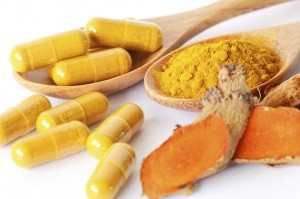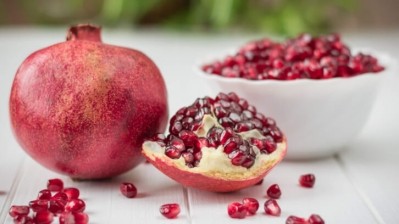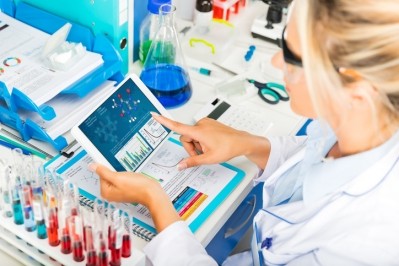View from the Editor's Chair
Where’s the innovation in dietary supplements? Part 1: From supply chain to new science

During an earnings call with analysts in November 2015, Colin Watts, then-CEO of The Vitamin Shoppe, said: “I think the issue that we are facing this year is […] the rate of new ingredients, new products, new forms that are coming into the market are less than we've seen in the past.
“And so when there isn't a lot of new in this category in particular, especially the retailer ends up taking a little bit earlier of a hit in that front, because the customer just doesn't have a reason to come in and see something new that's going on”
Less than two years later and Mr Watts had refined his view, telling analysts in March 2017: “Do I see any new fish oil ingredients or some blockbuster ingredient showing up on the calendar over the next 12 months? I would say no. On the other hand, what we are actually seeing is some very, very strong new news against some of the products that are in the market.”
I agree that there has been, and will continue to be strong news against some of the products, and the media will mostly pick up on some of the more high-profile studies like the Physicians Health Study II. However, innovation is evident in multiple areas within the dietary supplements industry, from transparency in the supply chain to ingredient delivery, customization/ personalization, and the science supporting the potential claims.
In this article, I’ll look at innovations in the supply chain and around the science, and in part 2 we’ll look at innovations around delivery, customization and personalization. This article isn’t intended to be an exhaustive look at the subject of innovation, but is more of a snapshot at some of the things that I consider innovative and exciting.
Supply chain
Transparency has been a buzz word in the industry for several years, but it is only during the last few years that it has really come to the fore with clear results. Companies themselves should be commended for their efforts, whether that is initiatives from long-term industry players like Gaia Herb’s Meet Your Herbs and MegaFood’s Big T Transparency, or more recent entrants putting transparency at the center of their marketing like Ritual and Amazon Elements.
The industry itself has led new initiatives like the Supplement OWL, Good Agricultural and Collection Practices and Good Manufacturing Practices for Botanical Materials, Supplement Safety and Compliance Initiative (SSCI), Global Retailer and Manufacturer Alliance (GRMA), and the Botanical Adulterants Program, transparency will only become more prominent.
The New York Attorney General’s investigation into herbal supplements has left a lasting impression on the industry, particularly for herbal products. DNA analysis has really come to the fore for a number of organizations and companies, despite many industry stakeholders continuing to note its limitations.
The NHP Research Alliance launched last year and is led by Dr Steven Newmaster at the University of Guelph, Canada. One of the goals of the alliance it to build an extensive Biological Reference Material Library (BRM) that can be accessed by industry partners, and regulators
The alliance will also bring together industry leaders, regulators and consumers for the development of new industry testing standards using reliable, affordable DNA-based tools.
Innovative genomic analyses are also being applied to medicinal plants used in Traditional Chinese Medicine (TCM). A joint venture was announced last year by US-based DNA research firm Illumina and the Institute of Medicinal Plant Development (IMPLAD), based in Beijing.
Some botanical ingredient suppliers themselves have been developing innovative techniques and embracing novel technology to illustrate their commitment to quality and supply chain integrity. For example, Indena has agreed a strategic cooperation with UK-based biotech Hyris based on unique sets of reagents for specific DNA sequences (known as bKITs) and the use of a miniaturized, portable device for the analysis of nucleic acids (known as the bCUBE).
Probiotics is another obvious category that is applying DNA-based technology, with companies like DuPont driving use of the technology for both identification and enumeration of the microorganisms. While standard PCR (polymerase chain reaction) methods can identify strains but not enumerate, DuPont has developed a digital PCR method to quantify live cells in a blend, while using the power of PCR to identify the strains simultaneously. A proof of concept was performed with a blend of three L. plantarumstrains.
The science
Moving on from the supply chain and quality side of the industry, there are also a number of areas that particularly excite and fascinate me, including the microbiome, probiotics and prebiotics; anti-aging (longevity); beauty-from-within; nootropics; adaptogens, and then a few specific ingredients in particular.
Starting with the microbiome, probiotic supplements are already outpacing growth in other types of supplements, according to Euromonitor International. We’ve moved well beyond just digestive health, with considerable evidence supporting a role for probiotics in heart health, brain health, weight management, immune support, sports nutrition, skin health, oral health, vaginal health, blood sugar management, and so on.
At our Probiota Americas event this summer, we’ll have a dedicated pre-conference workshop on sports nutrition that will explore the opportunities there, from immune support to reducing post-exercise inflammation and boosting recovery, and enhancing protein absorption. There is even research underway to mine the gut microbiota of elite athletes for potential new probiotics (the gut microbiomes of athletes are more diverse than non-athletes).
Anti-aging
Another area of fascinating research focuses on the role of mitochondrial dysfunction in the pathophysiologic declines associated with aging. Studies with various organisms, including nematodes, rodents, and humans, have largely upheld this theory that aging is associated with mitochondrial dysfunction.
At the end of 2013 a report in Cell (Vol. 155, pp. 1625-1638) from David Sinclair from Harvard University, who did so much to boost the anti-aging reputation of resveratrol into the mainstream, looked at raising levels of NAD+, which is an important cellular co-factor for improvement of mitochondrial performance and energy metabolism. Increasing NAD+ levels, which can be done using nicotinamide riboside (NR), in old mice restored mitochondrial function to that of a young mouse. ChromaDex has continued to support the research into NR and there appears to be significant excitement in scientific circles around this.
Another ingredient to watch is Urolithin A, a compound generated by gut microflora from ellagitannins, but not everyone has the right microflora to be able to make the metabolite. The ingredient is positioned for its anti-inflammatory properties and for boosting mitochondrial and muscle function. And early data shows it may also boost lifespan in C. elegans. This research is being driven by a start-up company called Amazentis. In 2017 the company published data supporting the safety of the ingredient, while data from a Phase 1 clinical trial in healthy elderly supported the safety, bioavailability, and biological activity of the compound.
Beauty-from-within
Moving on from anti-aging to beauty-from-within (which are very different things in my mind), there is a lot of good science supporting the benefits of collagen supplements for skin health. And this is tipping over into product formulation with collagen-containing products ubiquitous at Expo West 2017. After a couple of false dawns over the years, could we finally be seeing the coming of age of beauty-from-within products?
From outside to inside, another significant area of research and intriguing data revolves around cognitive health. The threat of age-related cognitive decline looms large over many aging populations around the world, and the potential of nutrients and other bioactives to support cognitive health is exciting.
The field of nootropics is attracting attention from a wide variety of consumer groups, from video gamers to athletes and to regular people at the office. The term nootropic was coined in the early 1970s, but it is only in recent years that it has started to appear in dietary supplement marketing, with brands like Nootrobox by HVMN (pronounced “human”) and Mind Lab Pro using the term on their labels.
The list of ingredients includes citicoline (Cognizin), Baccopa monnieri, phosphatidylserine, Rhodiola rosea, Ginkgo biloba, spearmint extract (Neumentix), omega-3s, B-vitamins, magnesium L-threonate (Magtein), Inositol-stabilized arginine silicate (Nitrosigine), theacrine (Teacrine), and on and on.
Another ingredient that I am watching very closely for cognitive health is lutein. For most consumers, lutein is all about eye health, but the eye and brain are connected and there is a growing body of science from primates, children, middle-aged people, and the elderly supporting the importance of lutein for brain health
Intriguingly, findings from pediatric brain tissue studies have shown that about 60% of the total carotenoids in the pediatric brain tissue is lutein, and yet NHANES data show that lutein is only about 12% of the carotenoids in the diets, so there is a preference for lutein in the brain (Vishwanathan et al. J Pediatr Gastroenterol Nutr. 2014).
A new study published in Nutrients reports that the macular carotenoids lutein and zeaxanthin are associated with cognitive function in preadolescent children. I expect much more research into this over the next few years.
Adaptogens
Another area to watch is adaptogens. They’ve been gaining momentum in the dietary supplement and tea categories for several years, but we’re now starting to see these in beverages (albeit niche). As consumers learn of the potential of these ingredients for stress management and energy, I expect ingredients like Ashwagandha, Rhodiola, and Schisandra to continue to gain traction. The science continues to grow as does consumer awareness. But a word of caution – there appears to be widespread confusion around what qualifies as an adaptogen – with a real opportunity for education initiatives.
And to finish I want to mention curcumin/turmeric (which is not an adaptogen, but it is an Ayurvedic herb). The quantity of science around curcumin/turmeric is accelerating and impressive. The positive data is also fueling positive headlines and boosting consumer awareness, and this is translating into impressive sales. According to data published in HerbalGram 111, sales of curcumin/turmeric products grew 118% in the mass channel, and 32% in the natural channel, to reach overall sales of over $50 million. Some people in the industry think curcumin could be as big as omega-3s. The ingredient has a long way to go but there is lots of innovative science and formulation technology focused on curcumin/turmeric.




















